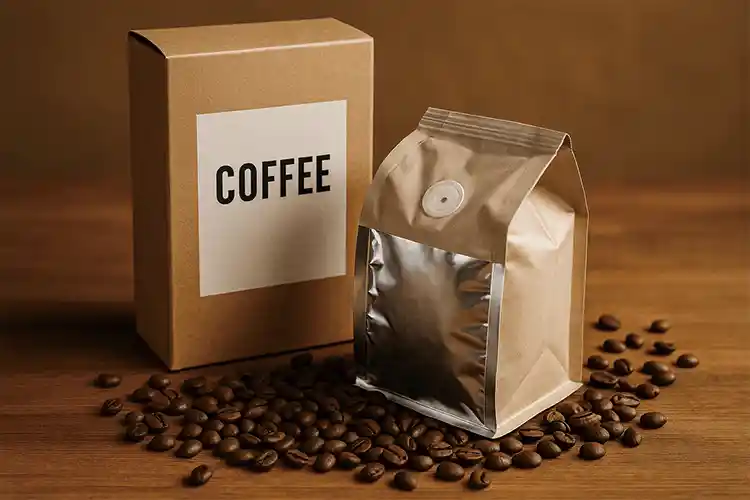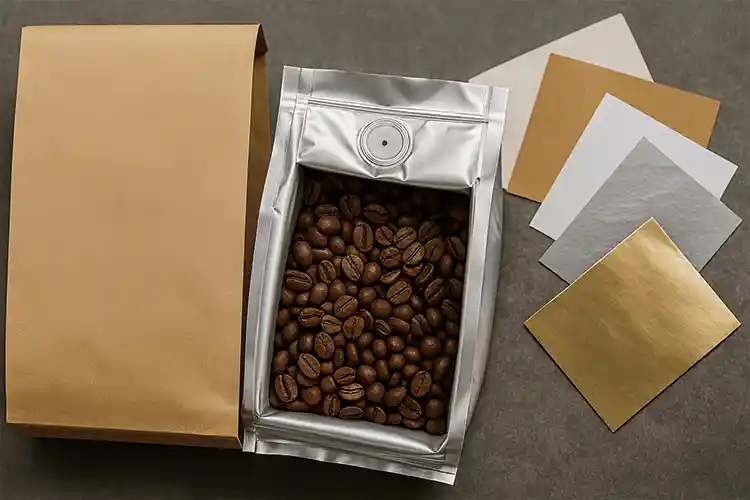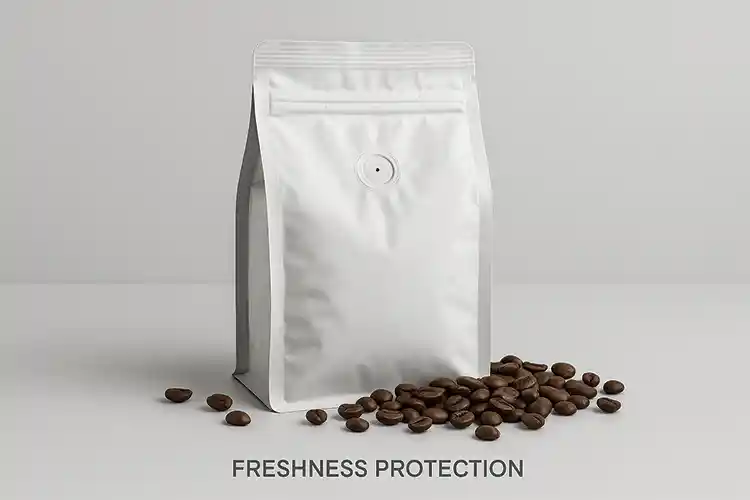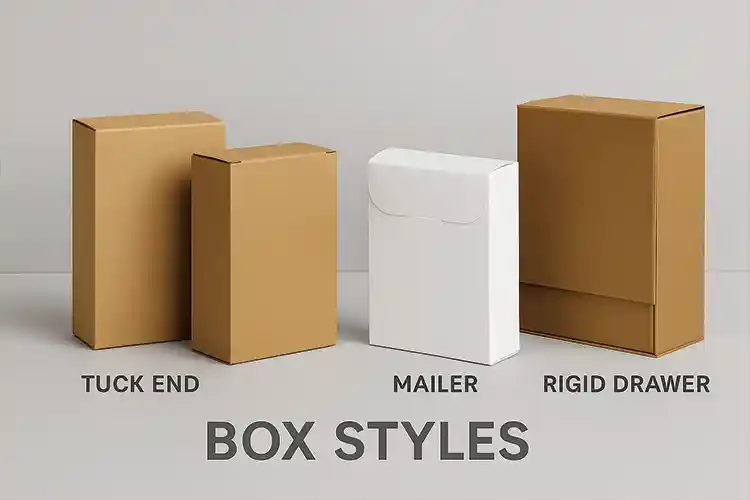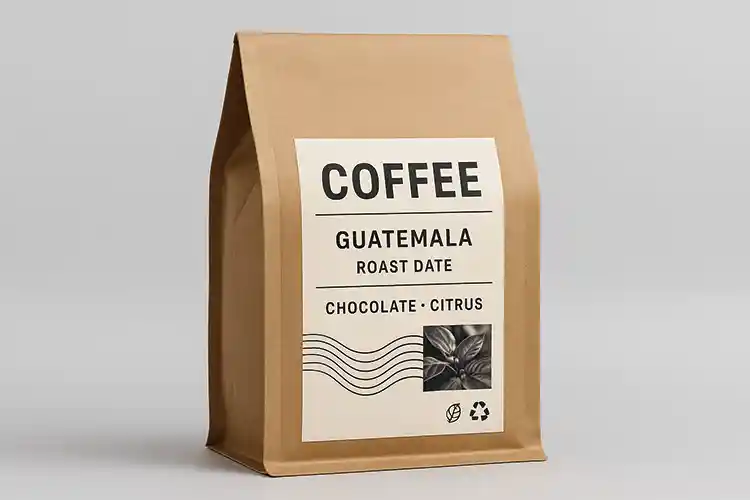Coffee stales fast. I once lost a month’s roast because packaging focused on looks, not barriers.
Freshness comes from a valve pouch or liner 1 that blocks air and light, while the outer coffee packaging box adds stacking strength, branding, and transport protection.
Keep reading. I explain the box-and-bag system2 and how to choose each part with confidence.
Is freshness really about the bag inside the box?
Many buyers assume the box keeps beans fresh. I used to think that too.
The inner valve bag2 preserves flavor; the custom printed coffee box protects, presents, and ships. Both matter, but the bag guards freshness.
BOX + VALVE BAG SYSTEM
I learned the hard way that the outer box is not the primary barrier. The real shield sits inside: a high-barrier pouch with a one-way valve 2. Beans emit CO₂ after roasting. If gas stays trapped, the pouch swells; if oxygen enters, oils oxidize and aromatics fade. The valve lets CO₂ out and keeps oxygen from coming in. The outer paperboard or corrugated coffee box adds crush resistance, stack height, and a clean panel for labels, but it does not replace the inner barrier. I now spec the system as two roles: bag for freshness, box for logistics and brand. This clear split keeps my team aligned and cuts waste.
What each layer actually does
- Inner bag: oxygen and moisture barrier; valve release; food contact; tamper evidence.
- Outer box: stack strength; print area; shelf blocking; e-commerce survival.
Layer vs. role quick view
| Layer | Core Role | Freshness Impact | Branding Impact |
|---|---|---|---|
| Valve bag/liner | Barrier + valve | Primary | Low |
| Paperboard/corrugated box | Strength + display | Indirect | High |
I tell clients: pick the bag for flavor, then pick the box for sales and shipping.
Which inner-bag materials keep beans fresh longest?
I worry about oxidation and moisture first. Price and eco goals come next.
Use a high-barrier film or foil laminate 1 for longer shelf life; use compostable films 3 for faster turnover and clear eco claims.
INNER BAG MATERIALS
Material choice sets your freshness window. Foil laminates (e.g., PET/ALU/PE high-barrier films 1) block oxygen and light very well. Metallized films 4 reduce oxygen more than plain plastics, yet cost less than full foil. Mono-PET or PE pouches are easy to recycle in some markets, but their barrier is weaker. Compostable PLA and paper-based laminates signal values, yet they often need tighter inventory control and cooler storage. I match material to roast cadence, shipping lanes, and retail dwell time. When a client sells 200 g bags that turn weekly, a compostable film can work. For 1 kg wholesale bags that sit longer, I insist on high barrier. For more material options, visit our packaging materials library.
Do I need a degassing valve, and where should it sit?
I once shipped valve-less pouches. They ballooned in transit and looked unsafe.
Freshly roasted beans need a one-way degassing valve 2; place it high on the pouch front or back, clear of heat seals and folds.
ONE-WAY VALVE LOGIC
Valves matter when beans are within days to weeks of roast. CO₂ must escape without pulling oxygen in. I use food-grade, low-crack valves and specify placement for both function and shelf view. Too close to a heat seal, the valve may leak; too low, beans can press against it and reduce flow. I align valve position with box die-cuts and label zones so nothing blocks the vent. For nitrogen-flushed lines, a valve still helps once the pack is opened at home.
How should the outer box support freshness and logistics?
I need boxes to survive freight and look good on shelf without fighting the bag.
Use the box to right-size, stack, and brand; design it around the pouch so seals, valves, and zippers are never stressed.
OUTER BOX FUNCTION
The box is the frame, not the vault. I choose paperboard for retail single units and litho-lam corrugated boxes for e-commerce coffee packaging 5 or wholesale multipacks. Internal fit is key. Too tight and the zipper kinks; too loose and the bag slumps, making the panel wavy. See our custom corrugated box solutions for more ideas.
How do labels, compliance, and sustainability guide real choices?
I aim to build trust fast. Labels and eco claims help, but they must be true.
Print roast date, origin, and storage tips; match eco claims to real materials and local recycling rules6 to avoid greenwashing.
LABELS & ECO CLAIMS
I keep labels simple and useful. Roast date beats “best before” for coffee fans. Origin, process, and flavor notes guide the choice. Grind icons reduce returns. For compliance, I reserve clear space for barcodes, nutrition, and recycling marks6. Learn more in our coffee packaging compliance guide.
Conclusion
To keep coffee beans fresh and your brand strong, use a high-barrier valve pouch for freshness and a right-sized printed box for protection, presentation, and logistics. Choose materials based on shelf-life needs, design boxes to support—not stress—the pouch, and ensure all labels meet compliance and sustainability goals. When in doubt, test each element together to guarantee performance from roastery to customer.
-
Learn how PET/ALU/PE laminates keep coffee fresh by blocking oxygen and light for extended shelf life. ↩ ↩ ↩
-
Understand how a one-way valve releases CO₂ while keeping oxygen out to protect coffee aroma. ↩ ↩ ↩ ↩
-
Find out compostable packaging standards and why they require industrial composting facilities. ↩
-
See how metallised films compare to foil and plastics in blocking oxygen and light. ↩
-
Learn why litho-lam corrugated boxes combine premium print quality with strong shipping protection. — ↩
-
Check official labeling requirements to ensure your coffee packaging meets food safety regulations. ↩ ↩

